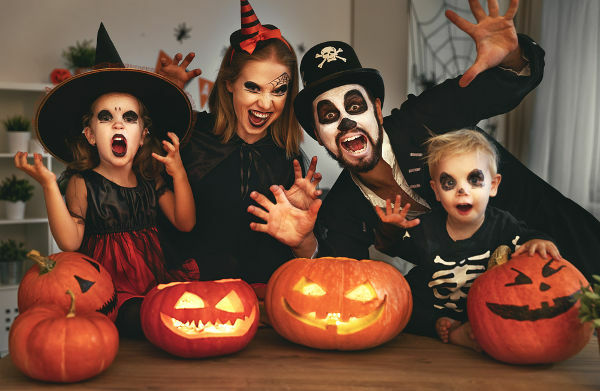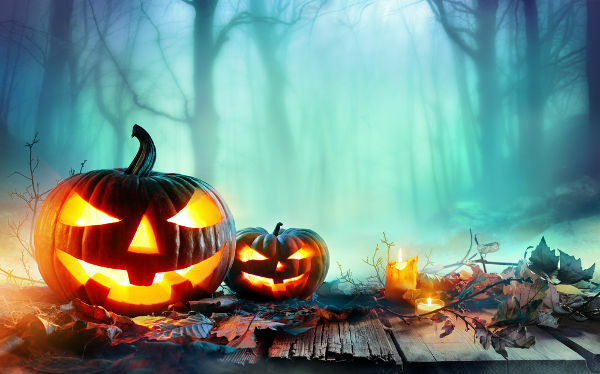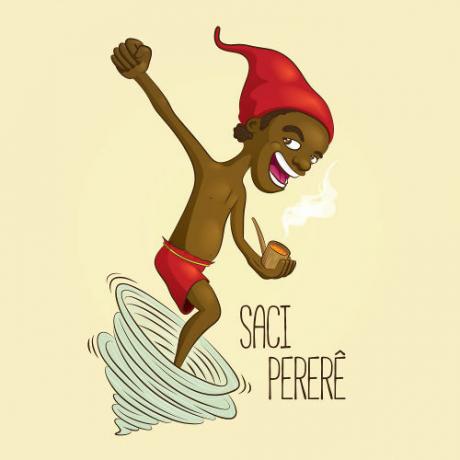O halloween is a traditional North American festival that originated in the British Isles and is reproduced in different countries, including Brazil. This party happens on the day October 31st and it is marked by children who dress up as monsters and go looking for sweets. Historians believe that this festival arose from celebrations held by the Celts in honor of the dead.
Also access: Norse mythology: the main gods and beliefs of the Viking peoples
Origin
Historians point out that the likely origin of Halloween was a festival practiced by the Celts called Samhain. This festival was one of the most important celebrations in the Celtic calendar and was held as a milestone in late summer. It was also a New Year for these people.
![Halloween grew out of Samhain, a traditional festival of the Celts.[1]](/f/c37deca0f6772c36578ddba49a42c7b5.jpg)
Samhain also had a mystical meaning, as the Celts believed that during the festival – which took place annually on November 1st – the barriers that separated the world of the dead and the world of the living
ceased to exist. As a result, it was believed that the souls of the last year's dead could roam the Earth.During Samhain, the Celts held celebrations with bonfires and with plenty of food. The bonfires (or lanterns) were intended to keep the dead away from the living and were lit in the various places where Samhain was celebrated. The food served to honor the dead and to celebrate the harvests that would supply them through the winter.
How did Halloween come about?
The emergence of Halloween happened sometime between the 14th and the 18th century and is totally related to the Christianization of the areas that practiced Samhain (Ireland, Scotland and Wales). A very common practice of Catholic church, during the Christianization of Europe, it was to create Christian festivals on the same date as pagan festivals were held.
This was a way of Christianizing people and, at the same time, erasing the traces of the previous religion and it was no different with the Celtic peoples. During the discharge period Middle Ages, the Church had a party called All Saints Day, or Hallowmas, in Portuguese. This date was celebrated in May, when the Romans celebrated a festival to ward off evil spirits.
In the eighth century, however, the Pope Gregory III ended up moving the date to November 1st, exactly the date on which Samhain was celebrated. The feast, at first, took place only in Rome, but the next pope, called Gregory IV, he decided to extend it to all the faithful of the Church. Historians speculate that perhaps this action may have been taken to weaken the pagan feast in the British Isles, for, despite Christianization, the resistance of pagan traditions in the area was great. Even so, it is not possible to say with certainty whether this was in fact the intention of the two mentioned popes.
With this, a great tradition began in countries like England, which, on November 1st, celebrated the All Saints Day (day of tribute to the saints) and, on November 2, celebrated the All Souls Day (day to pray for the dead). O October 31st ended up turning into All Hallows’ Eve, which means “eve of All Saints' Day”.
The October 31 celebration ended up embodying numerous features of the Samhain era. Thus, some associations can be made between the practices carried out in the pagan festival and the Christian festival. Let's look at some of them:
Samhain |
All Hallow's Eve |
Bonfires were lit to guide the dead and to ward off evil spirits. |
Bonfires were lit to guide souls to purgatory and to ward off practices such as witchcraft. |
People went from door to door to ask for contributions to the celebration that marked the Celtic festival. |
Children went from door to door singing and praying and received a cake as a sign that a soul had been released from purgatory. |
In the case of belief in monsters during halloween, its origin also dates back to Samhain, as the Celts believed that, during the festival period, evil beings could take advantage of the presence of the dead to harm living people. Also, on Samhain, it was common for people to go door to door wearing masks so as not to be recognized by evil beings. The belief in monsters and the use of masks (or costumes) is part of the modern Halloween tradition.
term origin
The importance of the Christian feast that emerged from the pagan tradition is so great that the term “Halloween” originated from the Catholic celebration that existed on the eve of All Saints' Day. Therefore, "halloween” is a contraction in the English language of "All Hallows Eve". The direct association can be made with the term that came to be used in Scotland: Hallows Een.
Accessalso: Discover the origin of an important festive date in Catholicism
Halloween's arrival in the US

All this tradition mentioned here, as we can see, is directly related to the culturebritish (By Brits, in this text, we mean English, Scots, Welsh and Irish). This tradition came to the United States in the mid-19th century, when the mass immigration of the Irish took place.
This immigration occurred on account of the great hunger that hit Ireland in the 19th century. Because of this precarious situation, more than a million Irish people moved to the United States in search of a better life. This migration of Irish people brought the Halloween tradition to the United States.
In the beginning, Halloween was a tradition that was restricted to the Irish, but at the turn of the 19th century to the 20th century, the tradition began to be assimilated throughout North American society and became one of the most traditional parties in the States United. Due to the popularization of North American culture, the party spread around the world.

From the Irish also came traditions such as carving a lantern. In the case of Irish tradition, it was common to carve turnips and turn them into lanterns. In the United States, due to the wide availability of pumpkins, they were used in making lanterns. Remembering that lanterns and fires were a common Samhain practice.
In English, these lanterns carved out of pumpkins are called “jack-o'-lantern” and mention a legend of Irish folklore. According to legend, a character named Jack made a pact with the devil after deceiving him. As he was accepted neither in heaven (by the pact with the devil) nor in hell (by having deceived the devil), Jack received from the devil himself a lantern carved from a turnip so that he could roam the world.
modern halloween
Currently, Halloween continues to happen annually on October 31st. On that date, in the United States, it is common for people to hold parties in which they dress up as monsters. Children also dress up and go from door to door saying “trick or treat”, expression that is translated here as “trick or treat”.
Halloween is a very important celebration in the United States and it is estimated that, every year, around 170 million people celebrate the party there. These people move the country's economy with average spending around 8 billion dollars|1|. These expenses include items such as costumes, sweets, food, decorations, etc.
Halloween became popular as a popular culture tradition as American culture was exported, particularly in the West. Many countries, like Mexico, have their own celebrations for the dead. Other countries, such as Germany, incorporated the festival into their own culture, but adapted it to the local culture.
Accessalso: Easter Rabbit: the origin of this important symbol of popular culture
Halloween in Brazil

Over the past few decades, we've seen the strengthening of the Halloween celebration in the way Americans celebrate it. Here, this day is known as Halloween and it's also marked by parties where people dress up as monsters, such as vampires and zombies. In some parts of the country, people reproduce the tradition of distributing sweets.
This penetration of American culture, however, has generated some reactions from people in favor of making a rescue of elements of Brazilian folk tradition. With this in mind, in 2003, Law No. 2,762 was approved, which determines October 31st as the Day of I sat down. The idea is to exalt and celebrate the Brazilian folklore.
Note
|1| Halloween Spending Statistics, Facts and Trends. To access, click on here [in English].
Image credits:
[1] Vernon Nash Photography and Shutterstock
Graduated in History
By Daniel Neves
